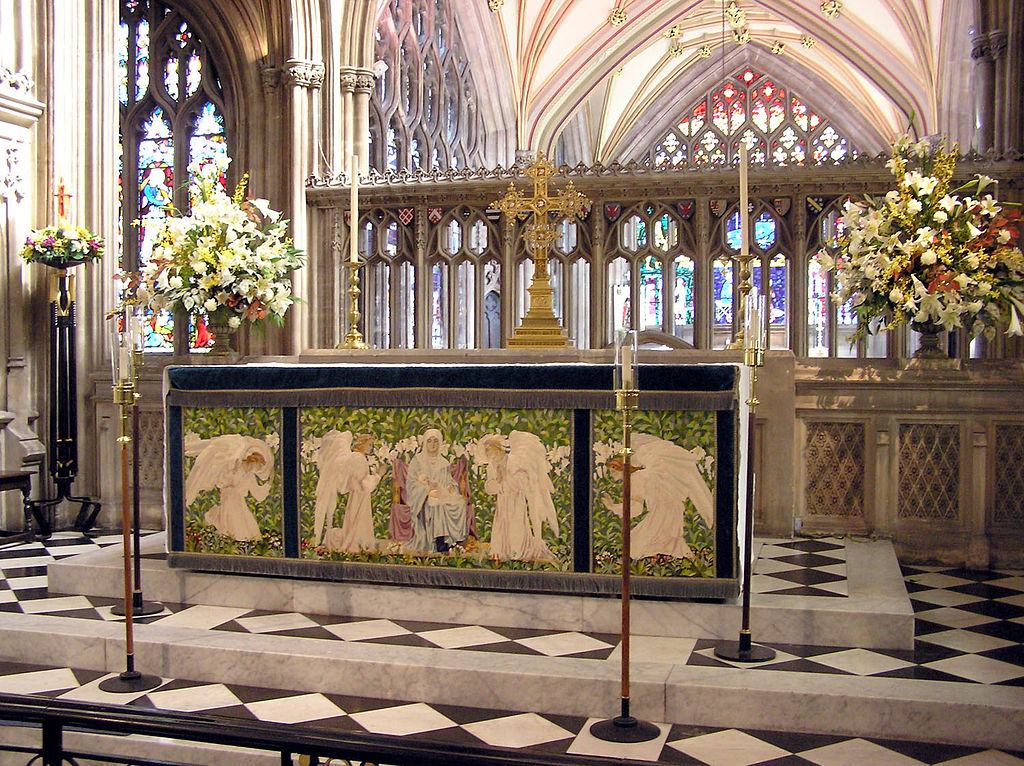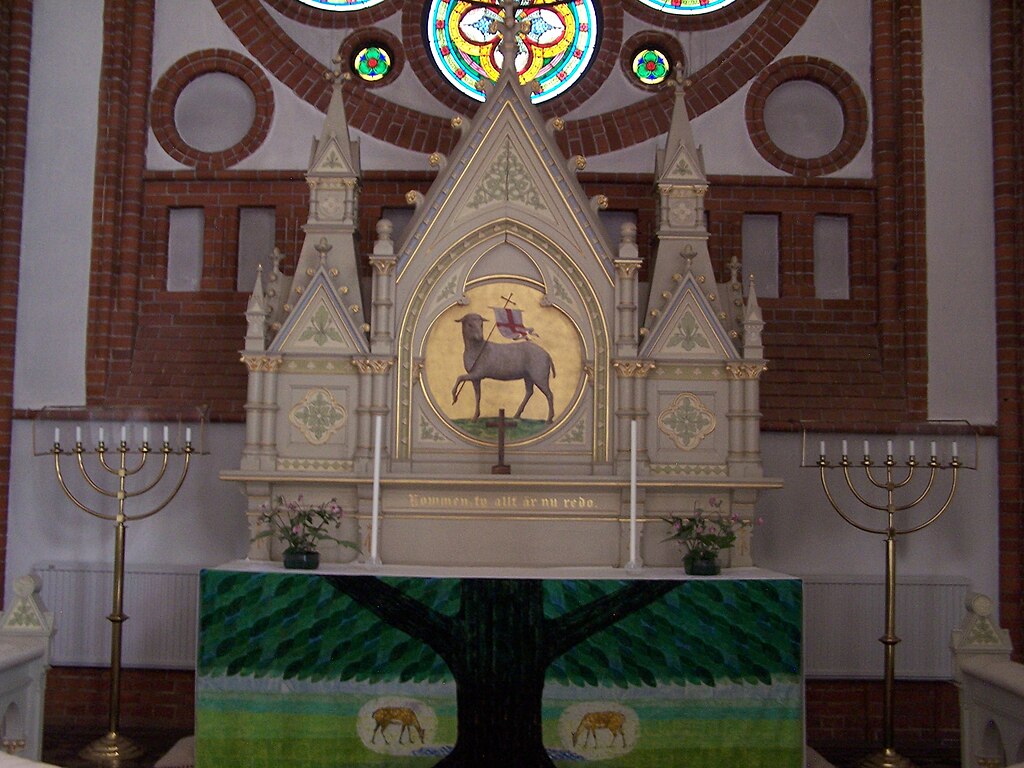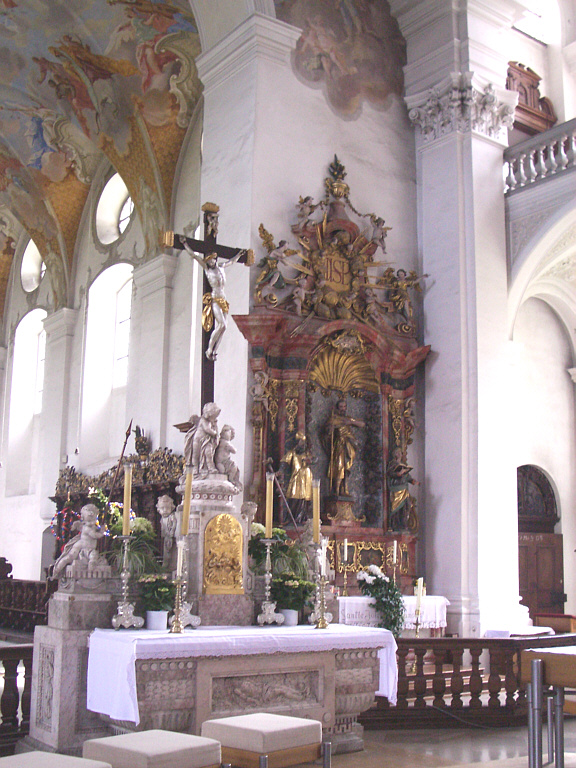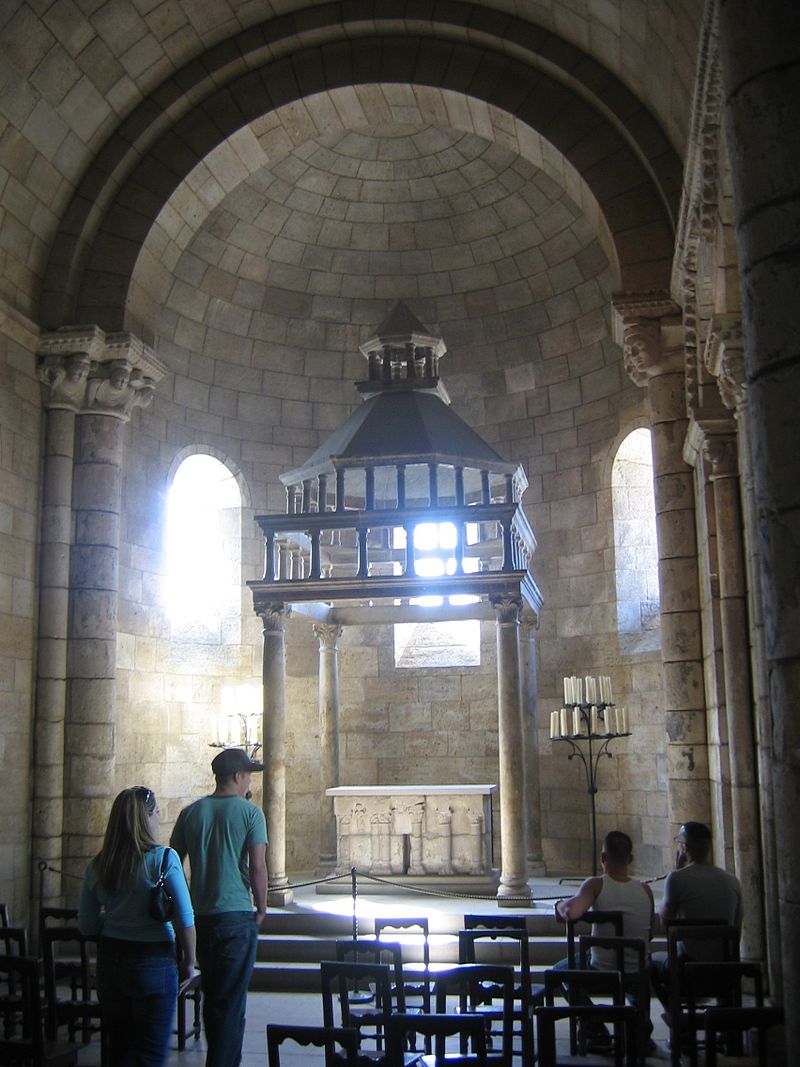
Symbols in Church Series Part II: True Identity at the Altar
Two months ago, my wife and I took our daughters to the park to see the Vietnam Moving Wall. After we were finished, we were walking out to the parking lot when we saw an older couple that we thought we knew. So, we went up and hugged them.
It turns out, we didn’t know them.
What I found equally funny was that the couple thought they recognized us! That’s why they returned our hugs!
Cases of mistaken identity can be embarrassing and humorous. However, they are neither embarrassing nor humorous when it comes to mistaking the identity of Jesus.
St. Luke writes: One time when Jesus was praying alone and the disciples were with him, he asked them, “Who do the crowds say that I am?” 19They answered, “‘John the Baptist,’ but others say, ‘Elijah,’ and others say ‘one of the ancient prophets come back to life.’”
20He said to them, “But who do you say that I am?” And Peter answered, “The Christ of God.”
21He gave them a strict command not to tell this to anyone. 22He said, “The Son of Man must suffer many things and be rejected by the elders, chief priests, and experts in the law. He must be killed and be raised on the third day” (Luke 9:18-22).
Jesus asks his disciples, “Who do the crowds say that I am?” The Jewish people had their opinions about Jesus. Some thought he was John the Baptist come back to life. John had been a larger than life figure, standing out in the desert preaching, “Repent for the kingdom of God is near!” Then suddenly his preaching was cut short when his head was cut off by King Herod.
Some said Jesus was the prophet, Elijah. Elijah did not die but had disappeared in a whirlwind and a fiery chariot. The prophet Malachi prophesied that Elijah would come before the Day of Judgment (Malachi 4:5). But Malachi was referring to John the Baptist being the second coming of Elijah.
Still others said that Jesus was another of the Old Testament prophets resurrected from the dead. A holy man of God sent to preach God’s Word.
These were all cases of mistaken identity.
These were all nice and respectful opinions of Jesus, but they all fell short of the truth. The same thing happens today when people are confronted with the question of “who is Jesus.”
Some will say that Jesus was a teacher and philosopher with all kinds of wise sayings and moral teachings. Others will say that he was a great prophet like Abraham, Moses, Mohammed or Joseph Smith like Muslims and Mormons teach. Some say he’s nothing but a legend, a myth that’s retold to teach some sort of truth. Others say he was a good man ahead of his times whose life was cut short because society misunderstood him.
You will hear people today say, “My Jesus wouldn’t say this …” or “The Jesus I believe in would allow for that …”. These people will not allow Jesus to recreate them in his image. Instead, they recreate Jesus in their image. They ignore what Jesus really has to say about what is right and wrong and so they reverse his teachings. They want “their Jesus” to permit any kind of sexuality and immorality.
We Christians are not immune to mistaking Jesus’ identity.
We rightly confess with our mouths: “I believe in Jesus Christ, his only Son our Lord, who was conceived by the Holy Spirit …” But then our prayers and lives are something different.


We confuse Jesus for a celestial genie. We rub the lamp with our good deeds and righteousness and expect Jesus to grant our every wish.

Many of you know that a “helicopter parent” is a parent who is constantly hovering over her children, making sure no harm comes to them. There is a new breed of parent today we call the “lawnmower parent.” The lawnmower parent clears the way and cuts down every obstacle that might hinder their little darling. The lawnmower parent is the dad who gets in the face of the soccer coach, ensuring little Johnny will start on offense to score lots of goals. The lawnmower parent is the mom who is in constant communication with the teacher, making sure little Susie gets good grades and has no issues with other students.

We want Jesus to be our lawnmower God. He should clear the way for us so we have no issues – no illnesses or cancer, no debts or job loss, no marital or family problems. Jesus should remove all obstacles and make life easy and carefree.
But none of those are the real Jesus. Those are mistaken identities.
Jesus asks his disciples, “Who do you say I am?”
Peter speaks up for the group: “The Christ of God.” Christ means Messiah, the Anointed One, the Appointed One, the One prophesied in the Old Testament and anticipated by the people. Everyone was waiting for the Christ.
Peter got it right with his words, but he was probably wrong with his thinking. Peter, the disciples, and average Jews believed the Christ would be a kind of military man, a political figure, one who would drive the Romans out of Israel and restore the nation of Israel to its former glory under King David and King Solomon.
Jesus reminds the disciples that he is not some kind of military, political and religious figure all wrapped up into one Christ who will bring glory for the nation of Israel. Rather, the true Christ will bring glory through suffering, death and resurrection. Jesus said: “The Son of Man must suffer many things and be rejected by the elders, chief priests, and experts in the law. He must be killed and be raised on the third day.”

When we are tempted to mistake the identity of Jesus, we need to look at the altar in our home church.
We look at some of the famous altars in churches around the world. You can also examine stained glass windows portraying the Lord’s Supper in our Wisconsin Evangelical Lutheran Synod churches by following this link.
The altar in church reminds us of the altars of the Old Testament. Bulls, lambs and goats were sacrificed on these altars. The throats of these animals were slit with their blood flowing down the sides of the altar and pooling on the ground. The people could hear the lowing, bleating and crying of the animals before they were slaughtered. The people could see the thick, black smoke that would arise from the altar and fill the sky.

These sacrifices did not remove the sins of the people. They emphasized them! These sacrifices reminded the people that innocent animals had to die for wicked sinners. These sacrifices pointed ahead to the ultimate sacrifice of the Lamb of God on the altar of the cross. The perfect body of the Lamb was pierced, his blood flowing down the altar and pooling on the ground of Golgotha. People heard the cries of the Lamb as he shouted, “My God, my God, why have you forsaken me?” and “It is finished!” The people could see the think darkness that covered the land as the innocent Lamb was sacrificed for wicked sinners.
Sitting upon the altar is the Sacrament of the Altar.
There we come to the real Jesus. More importantly, the real Jesus comes to us. And nowhere does Jesus meet us more intimately than in that sacramental meal we call the Lord’s Supper.

If Jesus was just a regular man, who may have been a moral teacher and a wise philosopher, there is no way that his body could be present in, with and under the bread and wine. If Jesus was merely a spiritual being, then he would not have a body that could be shared in this sacramental meal. But because the true Jesus is both God and Man, his pierced body and his shed blood are really present in the Sacrament of the Altar.
In the Sacrament of the Altar stands Jesus himself and the power of his holy Word. And there is life in this Word. Both sacraments – Baptism and Lord’s Supper – are tangible wrappings for that life-giving Word. It’s is God’s Word poured over us with water. It is God’s Word fed to us with bread and wine. This explains their historic nickname: “the visible word.” For in the sacraments the invisible power of the Word of God lies wrapped in visible outer elements.
I teach in all my Catechism classes that when the pastor announces the absolution at the beginning of worship, that is for everyone. But when the communicants approach the altar to receive the Sacrament, that is one-on-one time with Jesus. The Son of God in your hand. The Christ on your lips. Tasting forgiveness. Relishing in new life. Savoring salvation.

This is a powerful public testimony. It is personal testimony, direct from God, addressed personally to us. This Sacrament offers, gives and seals the same forgiveness as a Gospel sermon. The difference is that in the eating and drinking it’s applied to us individually and personally: “for you for the forgiveness of sins.” And sometimes a personal address makes all the difference in the world. Think for a moment which kind of mail you prefer – a third-class flyer addressed to “occupant” or the first-class letter with your name on it?
In the Sacrament of the Altar, Christ truly comes to us.
“Christ” comes from the Greek word for “anointed,” just as “Messiah” comes from the Hebrew word for “anointed.” In the Old Testament, a person had olive oil poured over his head to show that God had special work for him to do. At times priests, prophets or kings were anointed in this way for their life’s work.
As the Christ of God, Jesus was sent by the Father to do one-of-a-kind work. So he was anointed, not with olive oil but with the Holy Spirit. He was anointed to do the work of saving sinners, rescuing you and me from sin, death and the power of hell. He didn’t come as Christ to receive glory as a wise teacher or a powerful military leader. He came to receive glory by suffering, dying and rising from the dead.

The glory of Christ is visibly seen and physically tasted in the humble bread and wine that conceals his pierced body and shed blood in the Lord’s Supper.
No Mistaking Jesus’ Identity Here
When we are tempted by the devil and our flesh to mistake Jesus’ identity as a divine vending machine or a celestial genie or recreate Jesus in our own image, we need to discover the real Jesus. It is here at the altar and the Sacrament of the Altar where we discover the real Jesus. When we focus on the altar – the symbol of the Lamb of God’s sacrifice; when we eat and drink the body and blood of the Lamb of God in the reality of the Sacrament of the Altar; then there can be no mistaking Jesus’ identity. Here is the real Christ – fulfilling his one-of-a-kind work.






